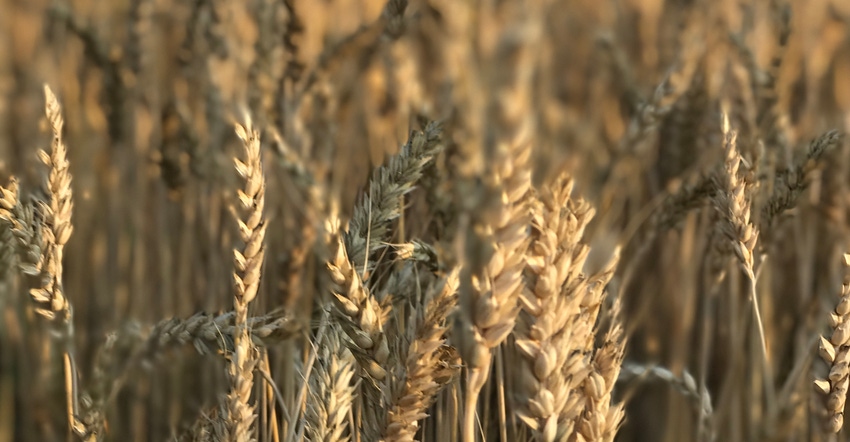
With the costs of inputs where they are today, it's important to take time to find the best wheat variety for your farm, advises Eric Olson, wheat breeder and geneticist at Michigan State University.
With his team, Olson is working to develop high-yielding, disease-resistant varieties for Michigan and the Great Lakes region. “With the price of urea and all the other inputs, you have to have a variety there to set the table for the rest of production,” he says. “So, the variety really sets the upper limit for your yield potential, so you can capitalize on other investments.”
Olson shares some thoughts about what producers should be considering:
1. Plant multiple varieties. Spread your risk, especially when inputs are scarce. “You can’t do everything with nitrogen, and so that falls on genetics to sort of pick up the slack,” he says. “There's scab resistance and yield potential available now in a single variety. There’s been a lot of progress, especially at MSU for breeding for resistance to scab.”
Year-over-year, varieties do not always perform the same. “A variety that's at the top of the trial one year could slip the following year,” Olson says. “So having at least two varieties on your farm allows you to balance the risk — if you want to go for maximal potential, but you have a vulnerability for a disease you can balance that with a disease-resistant variety."
2. Split your management. This year, Olson said he was happy to see a field planted with both the varieties Jupiter and White Tail, which is MSU’s new high-yielding white wheat that went into production this year.
“The value in that is White Tail is an earlier maturity, and it will flower about three days before Jupiter,” he says. “That allows you spread that T3 fungicide over a couple of days instead of having to cover 500 or 1,000 acres in one day.”
3. Maximize inputs. With funding from the Michigan Wheat Program (MWP), Olson and the MSU team are evaluating all their commercial varieties in the variety trials under intensive management practices and multiple locations. “This allows us to identify those varieties that have a greater response to those inputs, so growers can get a greater bang for their buck,” he says.
4. Look to stagger harvest. Rain at harvesttime can result in some quality issues after that extended amount of time, which brings Olson back to planting more than one variety with different maturities. For instance, an early maturity variety could offer a window to get it out of the field with that desired 11.5% to 13% moisture, while the later maturity variety may still be 15% to 17%.
5. Resisting scab. Beyond breeding for grain yield, Olson says the next top trait is scab (fusarium) resistance. “We’ve made a lot of progress in this area, and we're implementing some advanced breeding tools that allow us to have one of the fastest breeding programs in the country,” he says. “We can get varieties out in about a seven-year time frame, compared to 10 to 12 years previously.”
6. Trifecta against rust. While rust can be addressed with a T2 fungicide, Olson says researchers are trying to get that triple disease resistance with rust — leaf rust (also known as brown rust or orange rust), stripe rust (commonly known as yellow rust), and stem rust (commonly referred to as black rust or black stem rust). “We haven’t seen stripe rust much in Michigan since 2016, but it has the potential to be a major player,” he says. “Combined with scab, it’s another good reason to have a good disease resistance package.”
A vital piece of MWP’s research agenda has been released with the publication of the 10th consecutive year of high-management wheat research trials. For more than 30 years, MSU Extension has been conducting Wheat Performance Trials.
For the past 10 years, MWP has provided funding and resources to include a high-management component. To learn more about the 125 different varieties — including 63 experimental lines — tested across Michigan, view the 2021-22 report here.
About the Author(s)
You May Also Like






